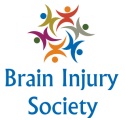
Hans Christian Anderson once said, “Where words fail, music speaks.” Music is a magical machine that connects us together. It helps us learn, relaxes us, gives us energy, it makes us laugh and it makes us cry. Music also has the ability to bring us emotional healing. Ever heard an upbeat song on the radio and started dancing to the beat? You might have even caught yourself dancing while driving. In the 1980s a popular song called, “Don’t Worry Be Happy” was made popular. People everywhere were smile t-shirts with the lyrics of the song as a reminder to cheer up on cloudy days. Children learn their ABC’s through repetitive song.
Music has the ability to move us and even alter our moods and emotions.
Music also has a therapeutic quality that can help in healing the mind, body and spirit. For people with brain injuries, music is often the key to bringing rehabilitative care. Music therapy was first recognized as an aid to soldiers who attained brain injuries after returning from World War II. Therapists are trained to help those injured through rhythm repetition games, exercising mouth muscles, exercising to upbeat music, improvisation, music listening, and performance. Arizona Tucson shooting spree survivor Gabrielle Gifford was believed to have found her voice after undergoing a specific music therapy protocol.
Is estimated that 1.5 million people in the U.S. sustain a traumatic brain injury each year, leaving many in long-term disability. Recent studies suggest that music therapy can help patients recover movement and reflex. Music therapists use techniques to stimulate speech, movement, and cognitive emotions in patients. Music also helps patients struggling with depression after a brain injury. Upbeat music naturally lifts the patient’s spirits and redirects their focus from their tragedy to happier thoughts.
The Benefits of Music Therapy:
Biomedical researchers have found the connection between music and movement and muscle control in patients. In some studies, the use of music therapy was said to improve movement in patients who have suffered a stroke or have Parkinson’s disease. Neurological music therapy for instance is said to play a key role in therapeutic care as its treatment techniques are based on data from scientific clinical research. It is specifically defined as the therapeutic application of music to cognitive, sensory, and motor dysfunctions due to severe injury and disease of the human nervous system.
When working with brain injury patients, it is important to exercise patience as they are relearning function and speech. Just as it takes a child time to learn how to speak and write, depending on how severe the injury, for some patients recovery may take longer. Pressuring a patient to move faster than they are capable of can actually frustrate them and deter them from moving forward in their healing. Healing comes in steps, with the appropriate therapist that can walk the patient on their particular journey.
Become Informed:
It is important to do the research and become knowledgeable about the unique therapy methods available for those suffering from severe brain injury and trauma. If you know someone struggling with the aftermath of a brain injury, seek help. It is important to also research and seek specific help that will be appropriate for a patient’s particular condition.
